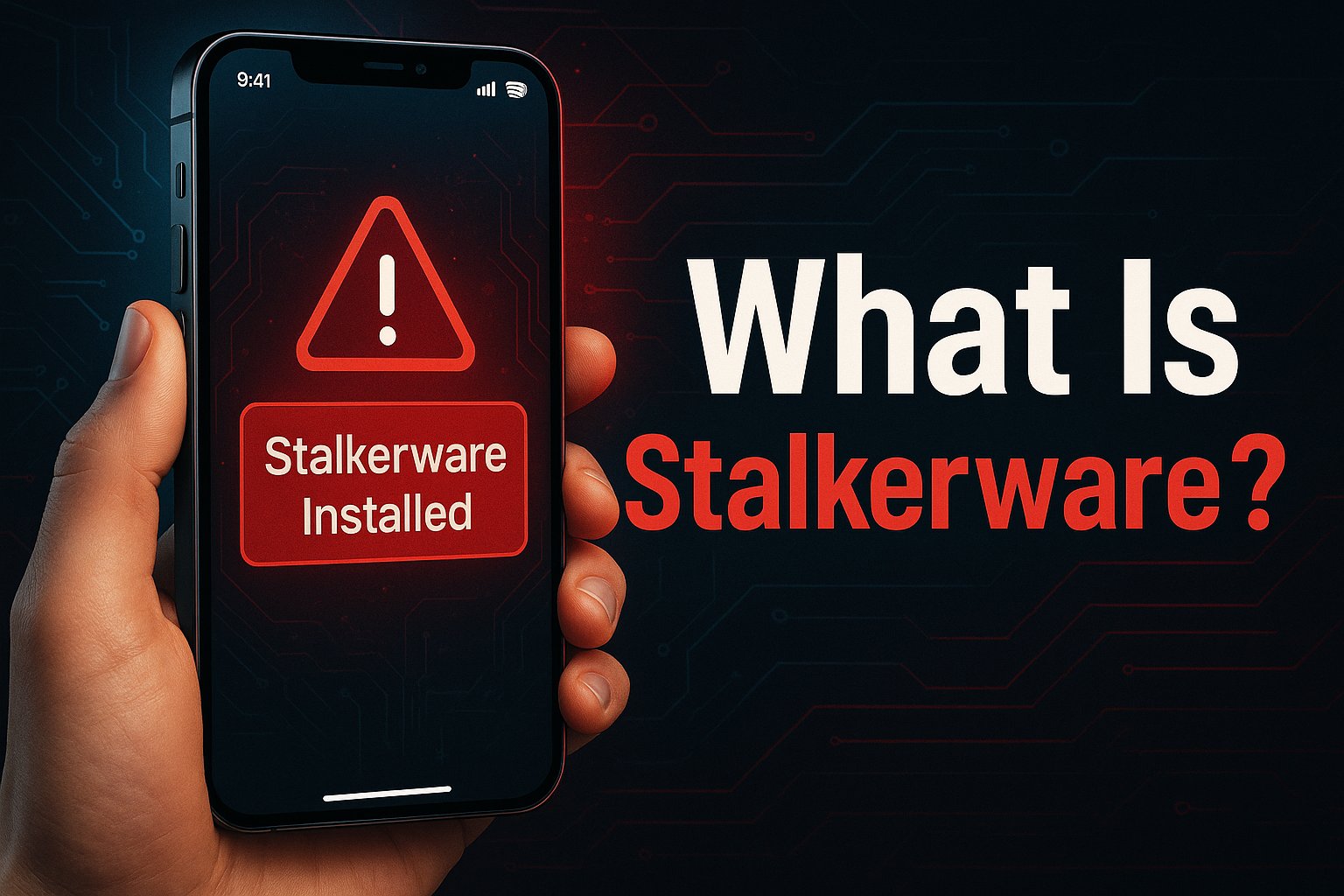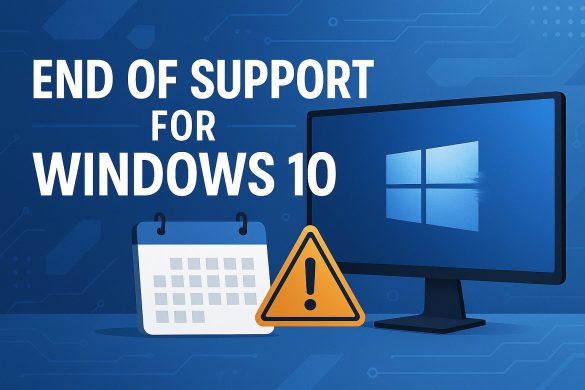What Is Stalkerware? Key Facts, Risks, and Protection Tips
Stalkerware is surveillance software that someone can secretly install on your phone or computer to track your activity without consent. It allows another person to monitor your location, messages, calls, and even use your camera or microphone without your knowledge. This invasive tool is often used in abusive relationships, but it can be deployed by anyone with physical access to your device.
You may never notice it running because it hides in the background, quietly collecting data. The presence of unusual apps, sudden changes in settings, or unexplained battery and data usage spikes can be early warning signs. Understanding what stalkerware is and how it works is the first step toward protecting your privacy.
By learning how to detect, remove, and prevent stalkerware, you can reduce the risk of being monitored without your consent. This knowledge also helps you act safely if you suspect your device has been compromised.
Key Takeaways
- Stalkerware secretly monitors your device activity without permission.
- It can be challenging to detect, but it shows sure warning signs.
- Safe removal and prevention require careful, informed steps.
Defining Stalkerware
Stalkerware is a type of monitoring software that operates without your knowledge or consent, often installed on personal devices by someone you know. It can log your private communications, track your movements, and access files, making it a serious privacy and security concern.
How Stalkerware Differs From Spyware
While stalkerware and spyware collect information from your device, their purposes and methods often differ. Spyware targets large groups for financial gain, such as stealing login credentials or banking data. Stalkerware, on the other hand, is frequently used for intimate partner surveillance or targeted monitoring of a specific person.
Spyware may be deployed by cybercriminals through malicious links or infected downloads. Stalkerware is more likely to be installed directly on your device by someone with physical access or your account credentials.
Another difference is visibility. Spyware often hides deep in system files to evade antivirus detection. Stalkerware apps may disguise themselves as legitimate tools, such as calendar apps or system services, while quietly tracking your activity.
Unlike many spyware threats, stalkerware is sometimes marketed as parental control or employee monitoring tools, but its use can be illegal without proper consent. You can read more about its legal and privacy implications from Bitdefender’s overview.
Common Features and Capabilities
Stalkerware apps often have a set of capabilities designed to give the installer complete oversight of your device. These may include:
| Feature | Description |
|---|---|
| GPS Tracking | Monitors your real-time location and travel history. |
| Call and SMS Logging | Records call logs, text messages, and sometimes audio. |
| Media Access | Retrieves your photos, videos, and voice recordings. |
| Browsing History Capture | Tracks websites you visit and search terms used. |
| App Monitoring | Identifies which apps you use and how often. |
Some advanced stalkerware can intercept encrypted messages, activate your microphone or camera remotely, and monitor social media activity.
Many can operate in stealth mode, removing visible icons and hiding from standard app lists. Like those described in Stop Stalkerware’s SpyGuard article, others can evade basic security scans by disguising network traffic.
These capabilities make stalkerware particularly invasive, especially with persistent remote access that allows continuous monitoring without your awareness.

How Stalkerware Works
Stalkerware operates by embedding itself into a device’s system to collect and transmit personal data without your consent. It can be installed through direct access or deceptive methods, then run silently in the background while sending information to a remote server.
Installation Methods
Stalkerware is often installed when someone has physical access to your device. This can happen during repairs, device setup, or when you leave it unattended. The installer may sideload an app in these cases, bypassing official app stores.
Some versions are disguised as legitimate tools, such as parental control or employee monitoring apps. Others come preloaded on counterfeit devices, like fake iPhones running modified Android systems.
You may also encounter stalkerware through malicious links or attachments. These exploit vulnerabilities in your operating system or apps to install the software without visible prompts.
Common installation risks include:
- Leaving your device unlocked around others
- Downloading apps from unverified sources
- Using unsecured public charging stations
Monitoring Techniques
Once installed, stalkerware can monitor a wide range of activity. It often has permissions to access GPS location, call logs, messages, browsing history, and photos.
It can also track real-time keystrokes, enabling the collection of passwords and private communications. Some variants activate microphones or cameras to capture audio and video without your awareness.
High data usage is a common side effect, as the software transmits collected information to a remote server. You might also notice faster battery drain or overheating, which are signs of constant background activity.
Typical monitoring features include:
- Location tracking with GPS updates
- Message interception for SMS, email, and chat apps
- App usage logs to see which apps you open and when
- File access for photos, documents, and media
Targeted Devices
Stalkerware targets smartphones, tablets, and in some cases, computers. Mobile devices are the most common targets due to their constant connectivity and personal data storage.
On Android, sideloading makes it easier to install such apps. iPhones are more restrictive, but risks increase if the device is jailbroken or if built-in tools like “Find My” are misused.
Desktop stalkerware is less common but still exists. It often appears as parental control or productivity tracking software. Keyloggers are a frequent example, capturing every keystroke you make.
You should regularly check your devices for unusual behavior, review app permissions, and install reputable security tools to detect hidden monitoring programs.
Who Uses Stalkerware and Why
Stalkerware is often deployed to monitor, control, or gather information about someone without their consent. The intent behind its use can range from coercive control in abusive relationships to workplace surveillance or criminal exploitation.
Connection to Domestic Abuse
In cases of domestic abuse, stalkerware is a tool abusers use to maintain control over victims. You may be tracked through GPS, your calls and messages may be monitored, or your camera and microphone may be activated without your knowledge.
Abusers often install this software when they have physical access to your phone or computer. Because it operates covertly, you may not notice it until behavioral changes in your device appear.
This constant monitoring can make you feel isolated and unsafe. It enables the abuser to know where you are at all times, who you speak to, and what you say. Such surveillance can escalate emotional abuse and make it harder for you to seek help.
If you suspect stalkerware is present, learn how to detect and remove it before confronting the abuser, as they may retaliate if they know you are aware.
Other Motivations for Use
Not all stalkerware use stems from intimate partner abuse, though it remains the most critical concern. Some parents use it to monitor children’s online activity or location. While intended for safety, it can cross into invasive surveillance if boundaries are unclear.
Employers may install monitoring tools on company devices to track productivity or prevent data leaks. When done without transparency, this can violate privacy rights.
Cybercriminals also use stalkerware to steal login credentials, banking details, or personal files. This stolen data can be exploited for identity theft or fraud.
In all cases, stalkerware operates without your informed consent, which makes it a significant privacy and security risk regardless of the stated justification.
Detecting Stalkerware on Your Device
Unusual device behavior, unexplained data spikes, and suspicious app permissions can indicate hidden monitoring software. Identifying these signs early helps you take steps to secure your information and limit unauthorized tracking.
Warning Signs of Infection
Stalkerware often runs silently, but it can leave subtle traces. If your phone or tablet overheats when idle, this may point to constant background activity.
Unexplained increases in mobile data usage are another red flag. Check your monthly usage reports for sudden spikes that don’t match your habits.
You might also notice changes in settings you didn’t make, such as disabled security features or altered location services. These changes can indicate that someone has tried to configure your device for remote monitoring.
If you receive strange text messages with symbols or code-like strings, these could be control commands sent by stalkerware apps. While not common, they are worth investigating.
Checking App Permissions
Reviewing app permissions can help you uncover suspicious software. Open your device’s settings and review the list of installed apps, paying special attention to those you don’t remember installing.
Look for apps with generic or misleading names that request high-level access, such as permissions to read messages, track location, or record audio. Stalkerware may disguise itself as a system utility or security tool.
On Android, you can check permissions under Settings > Apps > Permissions. On iOS, use Settings > Privacy & Security to view which apps can access sensitive data.
If you find an unfamiliar app with broad permissions, research its name online. Tools like antivirus scanners or guides from organizations such as the Coalition Against Stalkerware can help verify if it is malicious.
Battery and Performance Issues
Excessive battery drain can signal that a background process is constantly active. Stalkerware often transmits location, messages, and other personal data in real time, which consumes significant power.
Monitor your battery usage statistics in your device settings. If an unknown app appears high on the list, it may run persistently in the background.
Performance slowdowns, such as lag when opening apps or delayed screen responses, can also occur. These issues happen because the device’s processor handles your tasks and the stalkerware’s monitoring functions.
If these problems appear suddenly without a clear cause, consider running a security scan or following steps from trusted guides like this PCMag overview on finding and removing stalkerware.
Removing and Preventing Stalkerware
You can remove stalkerware by scanning your device with trusted security tools or by restoring it to its original state. Strengthening account security with unique passwords and multi-factor authentication helps prevent future compromises.
Using Antivirus Software
Run a full scan with reputable antivirus software known to detect stalkerware. Choose a vendor with an updated threat database and reasonable detection rates.
If your leading antivirus does not detect the threat, try a third-party scanner from another trusted provider. Some offer free tools that specialize in spyware and monitoring app detection.
For persistent infections, use a Rescue Disk or bootable USB scanner. This method runs outside your operating system, making it harder for the malware to hide.
Always keep your antivirus updated and schedule regular scans. This ensures new variants of stalkerware are identified before they can cause harm.
Factory Reset and Device Security
If detection tools fail or you want a guaranteed removal, perform a factory reset. This will erase all apps, including hidden monitoring software, and delete your personal data. Back up important files to a secure location first.
After resetting, reinstall apps only from official stores. Avoid side-loading software or accepting devices from untrusted sources, as modified phones can come preloaded with spyware.
Physically secure your devices. Keep them with you or locked away when not in use. Unauthorized physical access is one of the most common ways stalkerware is installed.
Check device settings for suspicious administrator privileges or unknown profiles. Remove anything you did not set up yourself.
Password Management and Two-Factor Authentication
Change all account passwords after removing stalkerware. Use a password manager to create and store strong, unique passwords for each account. This reduces the risk of one compromised password granting access to multiple services.
Enable two-factor authentication (2FA) wherever possible. An authenticator app is more secure than SMS codes, which can be intercepted.
Avoid saving passwords in browsers or unsecured apps. Instead, store them in an encrypted password manager protected by a strong master password.
Update passwords regularly, especially for email, banking, and social media accounts. These are often targeted first by someone attempting to monitor or control your activity.
Safety Planning and Support Resources
If you suspect stalkerware is on your device, your immediate safety and privacy should guide every step you take. Using a monitored phone or computer to seek help can put you at greater risk, so identify secure alternatives before acting.
Developing a Personal Safety Plan
A safety plan helps you prepare for potential risks before removing or confronting stalkerware. You should use a safe device—such as a friend’s phone or a public computer—to research and contact support.
Avoid deleting suspicious apps without guidance, as this can alert the person monitoring you. Instead, document unusual activity and keep evidence in a secure location.
Your plan may include:
- Identifying safe contacts and communication methods
- Planning emergency exits or relocation if needed
- Backing up important data on a secure device
- Setting up two-factor authentication for accounts
The Coalition Against Stalkerware provides guidance on safe device use, local support services, and risk-reduction strategies. If you are in immediate danger, contact emergency services from a safe location.
Organizations Combating Stalkerware
Several organizations work to address stalkerware through advocacy, education, and technical support. The Coalition Against Stalkerware unites cybersecurity experts, victim service providers, and researchers to share detection tools and safety resources.
The National Network to End Domestic Violence (NNEDV) runs the Safety Net Project, which focuses on technology safety for survivors of abuse. It offers training for advocates, law enforcement, and legal professionals.
Internationally, groups such as Women Against Violence Europe (WAVE) and Lila.help connect you with verified helplines and shelters in many countries. These networks emphasize survivor privacy and informed decision-making.
These organizations can help you access trustworthy information without relying on unsafe online searches from a compromised device.
Legal and Survivor Assistance
Legal and survivor assistance can help you understand your rights, preserve evidence, and take protective action. In the U.S., WomensLaw.org offers free legal information and an Email Hotline for questions about domestic violence, cyberstalking, and related issues.
The U.S. National Domestic Violence Hotline (+1‑800‑799‑7233) provides 24/7 confidential support. Trained advocates can help you assess risk, connect with shelters, and create a tailored safety plan.
If you involve law enforcement, bring documented evidence of suspicious activity. Organizations like NNEDV’s Safety Net Project can guide you in safely collecting and storing digital evidence, reducing the chance of alerting the abuser.

 55 Park Road,
55 Park Road, 




